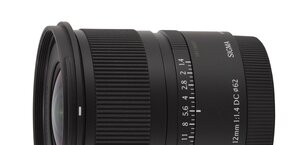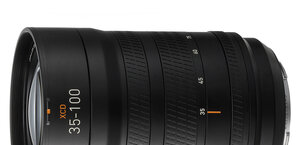Sigma A 24 mm f/1.4 DG HSM
4. Image resolution
Now let’s check how the tested instrument compares here. The performance in the frame centre, on the edge of the APS-C sensor and full frame, depending on the aperture value, is presented in a picture below.

Please Support UsIf you enjoy our reviews and articles, and you want us to continue our work please, support our website by donating through PayPal. The funds are going to be used for paying our editorial team, renting servers, and equipping our testing studio; only that way we will be able to continue providing you interesting content for free. |
- - - - - - - - - - - - - - - - - - - - - - - - - - - - - - - - - - - - - - - - - - - - - - - -
It would be difficult to call the results of the Sigma in the frame centre other than excellent. Already at the maximum relative aperture the MTFs reach 35 lpmm so the images are of good quality. Somewhere near f/2.2 the lens exceeds a high level of 40 lpmm and by f/5.6-8.0 it reaches the peak of its possibilities - almost 45 lpmm. Such a performance is really beyond reproach and the lens should be praised a lot in this category.
The way the tested lens fares on the edge of the APS-C sensor is also beyond reproach. It is true that the MTFs at the maximum relative aperture are a bit below the decency level but the values remain really close to it. By f/2.0 and f/2.8 the images are already decent and from f/4.0 their quality is good.
The edge of full frame was the most bothersome for the Sigma. Its achievements by f/1.4 and f/2.0 are noticeably below the decency level; only on stopping down to f/2.8 you can enjoy an acceptable image quality.
In order to assess properly what kind of lens you deal with let’s do some comparisons. The graph below shows you the performance of the tested Sigma, the Sigma A 1.4/35 and the older Sigma EX 1.8/24 in the frame centre. The last one was tested on the Canon 20D which provides MTFs lower by 1-2 lpmm than those from the EOS 5D MkIII so, in order to compare these three directly, we added 1.5 lpmm to the original results.

It is obvious at once that the 1.4/24 model is far more difficult to produce than the 1.4/35. In a range from f/5.6 to f/16 both lenses are practically indistinguishable but in the f/1.4-4.0 range the lens with a longer focal length prevails decisively. For a change you can notice the progress Sigma has made during the last dozen years or so. The advantage of the new Sigma 1.4/24 over the older and slower one, easier to manufacture, is huge.
Let’s check now how the Sigma compares with the rivals produced by Canon and Samyang. All three lenses were tested either on the 5D MkIII or the 1DsMkIII so their results are directly comparable.

If you look closely at the results you see the Sigma is noticeably better than the Canon at the maximum relative aperture and just symbolically better by f/2.0. In the f/2.8-8.0 the Canon minimally prevails and by f/8.0 and f/11 the differences are negligible. The overall assessment of the Canon and the Sigma seems to be similar but, if I had to choose I would like the Sigma best. The advantage of the Canon on stopping down is very slight; it would be very difficult to spot it in real life photos. However the advantage of the Sigma by f/1.4 is noticeable both on the graph and in photos. Both lenses, described above, are noticeably better than the Samyang which only by f/5.6 can compete with them successfully; the Sigma is also better than the Nikkor AF-S 1.4/24G which performance was worse than that of the Canon 1.4/24 II.
At the end of this chapter, traditionally there are crops taken from photos of our test scene in the frame centre. It’s worth reminding here that these are JPEG files saved along RAW files we used for the analysis above.
| Canon 5D MkIII, JPEG, f/1.4 |
 |
| Canon 5D MkIII, JPEG, f/4.0 |
 |






